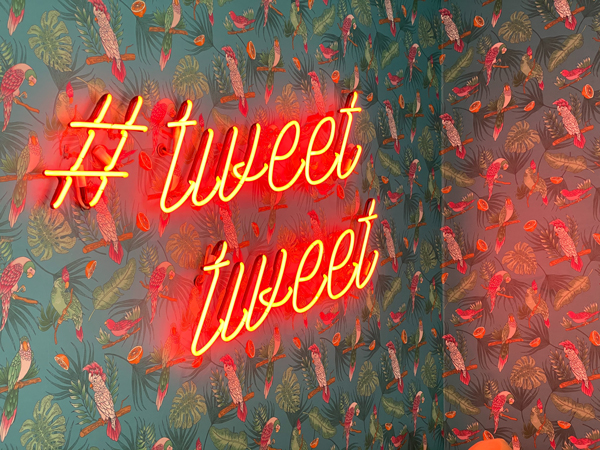
Why We’re Flying the Coop: Our Twitter Story
April 05, 2023
Let’s not bury the lead here: We’re pretty much done with Twitter.
If you’re not from the Midwest like us, you may not know how much weight the words “pretty much” carry in our lexicon. It’s pretty much as close to a definitive as we get.
It means that once we’ve pinned a post with a link to this blog on our profile, we’re turning off the lights, flipping the sign to closed, and locking the figurative door on our Twitter account. At least for now.
And we’re telling you all this not because we think you have to do the same but to tell you to take a hard look at where you need to be and what you need to do to reach your audience.
So why would we walk away from a platform that (according to Hubspot) is growing 30% faster among Gen Z than Instagram and gives us the potential to reach 544.5 MILLION people?
To steal a page from Marie Kondo, it doesn’t spark joy anymore. There’s much more to it than that, but, at the end of the day, we’ve reached a point where the practical benefits of our Twitter strategy decreased, the toll to achieve anything (both physical and ethical) increased, and now we’re badly out of balance.
Here are the bullet points that made the decision for us:
- We’re Not Accomplishing What We Thought We Could
Sure, Twitter has always been different from other social networks because the “micro-blogging” aspect of Twitter means that users consume short blasts of info in a compressed amount of time. To be successful, you need to get in, get people talking, and then either get them to your next Tweet or over to your website, where you have control.
When we launched our Twitter account – both as a CUSO and our original credit union account – it was with the idea that we would join the conversation, expand our reach, and attract like-minded folks. We’ve done some of that, but over time the people we want to meet in the Twitterverse have started to go elsewhere, and our growth and reach have stagnated.
- The Vibe has Changed.
From a business standpoint, I know we can’t rely entirely on “Vibes”, but my inner Post-Modern Hippy does make an appearance from time to time.
From the start, there was plenty of not-super-chill chatter on Twitter. Someone would post a sarcastic joke, someone else would get offended by it, and yet another random person would swoop into the comments to keep the pot stirring. Like it or not, that’s just kind of what happens when we get together online with few consequences.
It could just be my experience, but the toxicity seems to have increased exponentially in the last couple of years. If we were accomplishing our goals with the platform, we could take the good with the bad and press forward. The vibe change, though, affects the people who manage the account, and that matters.
- Our Business Ethics Feel Compromised
Listen, I’m not in the position to comment on how anyone else runs their business. (Unless they ask me to. Marketing Consultation is a service we offer.) And I won’t claim to understand what events led to what decisions at Twitter HQ or pass judgment (publicly, anyway) as to whether I think they were right or wrong.
I know that at a certain point, it started to appear that Twitter leadership held different beliefs about the importance of teamwork, collaboration, compassion, and human decency than we do.
Again, I can’t claim to know, but in the words of Douglas Adams, “If it looks like a duck, and quacks like a duck, we have at least to consider the possibility that we have a small aquatic bird of the family Anatidae on our hands.”
And it was at that point that we realized there were three strikes against this strategy, and it was time to shut it down.
So, where do we go from here?
Well, as soon as we decided we were ready to end this chapter, we locked our profiles so only current followers could see and comment. Honestly, just knowing that we wouldn’t have to face the Troll Farm or Bot Factory every time we logged in was a huge relief.
Once I’m done typing these last few sentences, we’ll post this on our blog, link it to a pinned Tweet, and stop posting altogether.
For now.
The social media landscape continues to evolve, and we can’t predict with any certainty what will happen in 6, 12, or 18 months- or tomorrow, for that matter – so I honestly don’t know that this is a permanent goodbye to that account. It made sense at one time, it might again, and we’ve already carved out our little piece of real estate there, so I’m not willing to give it up.
Final thoughts? Social media can be part of a strategy for nearly anything you want to promote, but our job as Marketers is to view that as a fluid process. It gives us access to feedback as often as we’re willing to hear it, and sometimes it will tell us that it’s time to stop standing at the threshold and close the door.

About the Author: Suzanne Campbell is the Brand & Content Manager on the Exclamation Services Marketing team and the self-proclaimed evangelist for Brand Voice. She’s picked up a lot of smart ideas from a lot of amazing people in her more than 20 years of experience and you can frequently hear them on the Awsomology podcast.

